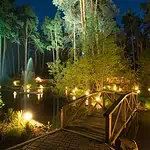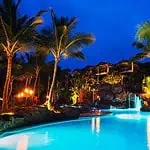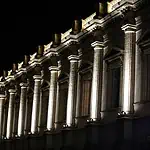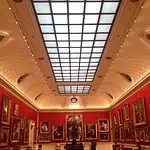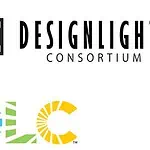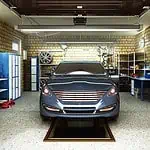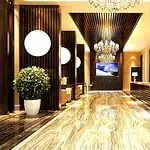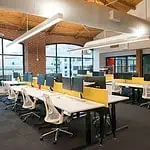Lighting plays a crucial role in defining the vibe of a place. It illuminates the area for utility, improves the aesthetics, and creates a mood around it. There are plenty of lighting techniques that have different applications. Some are used to enhance the utility, while others set the tone for the mood of a place. One such type is Facade lighting, which we will discuss in this piece. So, let’s get straight to it.
What is Facade Lighting?
Facade Lighting is used to compliment the exterior of a building. The facade is a term used to refer to the frontal exterior of a building or any structure. It is a technique that highlights the exterior of a property. You get both utility and aesthetic enhancement from it. Facade lighting plays an essential role in defining the feel of a place. As they say, the first impression is the last, and the Facade lighting is the first thing anyone will see in a building. Hence, it has the utmost importance.
A classic example of it is the horror house. The feeling of horror creeps in the moment you step inside that particular area. It is because the Facade lighting of the place sets that mood. If a haunted house displays a happy mood outside, it will not serve its purpose. In contrast, if the property you live in has a facade light like that of a haunted house, it will feel unwelcoming.
The point is while the facade lighting is essential, you must know how to get it right.
Why Is Facade Light Important?
Lighting the exterior of a building is more important than you may imagine. It offers an additional layer of security during the night and keeps trespassers at bay. Furthermore, the facade lights also enhance the utility of the area around the building. For example, if you live in a busy neighborhood, the facade lights on your house will help bypassers navigate.
Similarly, commercial buildings can use facade lights to highlight their logos and advertisement boards. It will make the building stand out even during dark hours. Furthermore, lighting the facade also enhances the aesthetics of a building. As discussed earlier, it creates a vibe around the building, making it memorable for visitors and those who just pass by.
Suitable Facade Lighting
The suitable facade lighting has the following characteristics;
Aesthetic Enhancement
As discussed before, lighting can define the feel of a place. It sparks an emotional response and makes the structure memorable. Our brain recollects memories via emotions, which would not be special unless a place elicits an emotional response. If you decide to light your home’s facade, it will make the guests feel special. Similarly, restaurants, particularly those that offer fine dining, should always uphold its importance. When adequately lighted, the restaurant becomes a special place for visitors. And consequently, drives the business for the restaurants.
Retail stores and other commercial outlets can also use facade lighting to attract customers.
Improves Utility
Facade Lighting not only improves the aesthetics of a place but also enhances its utility. And if it does not perform either of these jobs, it is not suitable. The primary function of facade light is to increase visibility. On residential properties, it makes it easier for bypassers to navigate during the night. And it makes commercial buildings stand out in the market. Furthermore, the facade lighting also keeps trespassers at bay and provides a layer of security.
Sustainability
Sustainability is another feature that is a must for facade lighting. It is imperative because you will keep the lights on all night and cannot ignore the responsibility towards the environment. Furthermore, unsustainable lighting can also increase your energy bills, directly impacting you. By selecting an energy-efficient source, you help the environment and reduce your energy bills.
And when it comes to sustainability, LEDs offer the best solution. These lights can brighten up a space without consuming much energy. You get the same illumination level with a 10-watt LED that a 100-watt traditional incandescent bulb offers. Hence, using LEDs for facade lighting will save a decent amount on energy bills. And it would not come with the guilt of negatively impacting the earth.
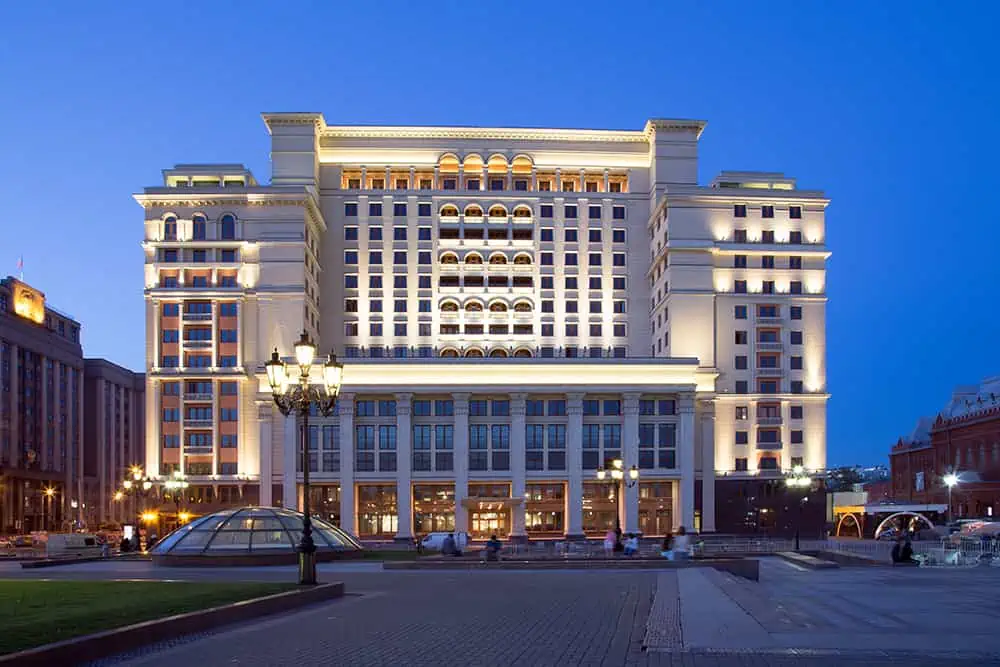
LEDs for Facade Lighting?
LEDs are the intelligent choice for facade lighting, and several reasons exist. Some of them are;
Variety
The market offers a range of LEDs for different purposes. You will not find the same variety in any other light source. Thus, you can personalize the facade however you want—furthermore, these lights can come in all shapes, sizes, and colors. Mixing colors and sizes enhance the aesthetics better than a monotonous design. There is even an option of smart LEDs, which ideally suit commercial businesses.
You will not have to change the lights on different occasions. Just a tap on a smartphone or another remote device will let you select the colors, blinking pattern, and even color temperature.
Durability and Cost-efficient
Facade lighting must be durable because you want to avoid replacing the lights after every few months. It is just too much hassle, and the LEDs prevent that. These lights can last for years, so once you have installed them, you will not require replacements anytime soon. Furthermore, LEDs cost higher upfront but keep it from discouraging you. The amount of capital you will save on the energy bills will make up for it.
More information, you can read Advantages and Disadvantages of LED Lighting.
Types of Facade Lighting
Facade lighting has many types, each of which has a separate application. You must understand the structure and its lighting needs to select the appropriate type. Some common types include;
Uniform Illumination
As the name suggests, uniform Illumination means that the brightness level remains the same throughout the vertical length of a building. You can achieve it via floodlights, but it is not a rule. Any light fixture that can cast a uniform beam throughout the length of a property will work. Regardless of the light fixture you pick, you can install them at the top of the building or the bottom of it.
Furthermore, the beam angles of the light must be appropriate. You want them straight down or up because otherwise, it would not produce uniform Illumination.
It would be best if you used uniform Illumination when you want to illuminate the entire structure. Furthermore, you can add different colors to make the lighting more appealing and fun. However, do not add brighter colors to it because that will create a daylight-type environment that does not suit the facade lighting.
Local Lighting
As the name indicates, local lighting illuminates a particular part of a structure. You can use them for light elevations, columns, and even plates. It will highlight the details of these structures. Furthermore, local lighting can also work to enhance the aesthetics of landscapes. For example, if the walls of a property are short and the lawn inside it is visible. You can use the local lighting on plants, paths, and gardens to make them more appealing.
Commercial buildings such as retail stores can use local facade lighting to highlight their logos. You can also use them over the advertisement boards to make them visible at night. And like uniform Illumination, using multiple colors is an option. You can use a combination of colors suitable for a particular place.
Hidden Illumination
Hidden Illumination is the most challenging but also the most appealing type of facade lighting. There are plenty of ways to execute it, including silhouette and contour techniques. With the former method, you must create shapes by installing the lights at strategic angles. You can focus on something other than individual elements with the silhouette technique. In contrast, the contour technique provides a glow and dramatically affects the structure. It would be best if you used LED strips for this technique.
Several other methods, including the ones that can create a backlight effect and generate light shadows, can also work for hidden Illumination. Such lighting looks very elegant from the front. You should pick the technique based on the structure’s shape and lighting needs.
Other facade lighting techniques include direct, washing, accentuating, and grazing lights.
How To Properly Facade Light?
Once you have understood the purpose of facade lighting and know your preferences, you are good to light the exterior of a building. However, there are some rules that you must follow during facade lighting. These are:
1- Complies with Regulations
The facade lighting should always comply with local rules and regulations. You want to avoid legal trouble just for lighting the exterior of a building. Hence, always ensure that the lights are not too bright to cause any inconvenience to the neighbors. Please check with the local law enforcement agency to learn the regulations around it.
Furthermore, even though governments do not bind you to use energy-efficient fixtures, you should use them anyway. Given the energy crisis, the government will likely make it mandatory to use energy-efficient in the coming years. So, you will not have to replace the fixtures in the exterior of your house or commercial building.
2- Should Serve The Purpose
As discussed earlier, facade lighting has several purposes; thus, it should always be in harmony with that. If decoration is the priority, you should pick the colors, brightness, and size of the fixtures accordingly. The techniques to enhance utility and aesthetics are different, and you must understand them before lighting the exterior.
3- Resist Monotony
While lighting the exterior monotonously is more straightforward, it does not achieve the best artistic effect. You should channel your creativity into making the building look elegant and attractive. There are different methods to do that. For example, you can pick between floodlights, LED strips, wall washers, and media facades. Furthermore, you can also choose different colors to give the building a bit of your personality.
4- Avoid Light Pollution
You should avoid light pollution even when there are no regulations around it. It is particularly important if the building is located in a busier area. You want car drivers around the building to avoid getting a glare while driving. And it is not just about brightness; the beam angles of the light also play a crucial role. The point is it should be clear whether someone is driving or just walking by.
5- Weather Resistance
Facade lights do not always have a cover of a building which makes them vulnerable to environmental hazards. If the LEDs are not water-resistant, they will become damaged during rain. Furthermore, the UV rays coming directly on them can also cause damage. Hence, you should always look for weather resistance solutions while selecting the facade lights for a building.
More information, you can read IP Rating: The Definitive Guide.
6- Right Colors
Colors will help you set the tone for the mood but remember that some of them are off-limits. For example, you cannot use a combination of blinking red and blue lights. From a distance, it will look like a firetruck or a police vehicle. Similarly, if the house is at a beach, avoid the colors the coast guard and sailors use to communicate.
7- Never Install Facade Light Yourself
Only install the facade lights yourself if you are a certified electrician. The risk of electrical failure is much higher with exterior lights; thus, you cannot afford any errors. Call a professional to understand the number of LEDs or other light sources you will need and ensure safety from electrical fires. Allow them to inspect the area and adequately install the lights that meet the community’s guidelines.
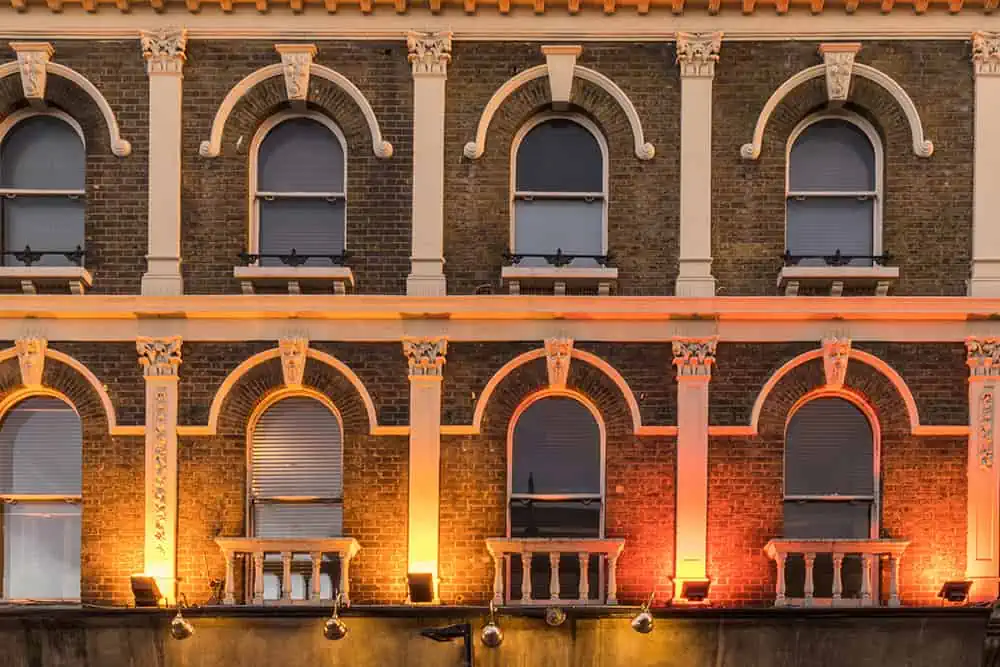
Factors To Consider While Facade Lighting?
Now that you know most things about facade lighting, there are a few things that you must look for before executing it on a building or any other structure. These include;
Not All Parts Need To be Highlighted
A rookie mistake, while facade lighting is the Illumination of the entire frontal area. Sometimes it is required, but most times, lighting just the important spaces suffice. Hence, before lighting up the whole facade, take a comprehensive look at it and understand whether it is even needed.
You should identify the significant viewpoints of the structure and light only them. But the views might vary depending on the viewers. For example, the perspective for the same property will be different for a pedestrian than for someone sitting in a high-rise building nearby. You have to select the viewers and light the facade accordingly.
The Mood You Want To Set
As discussed earlier, facade lighting has a defining role in determining the mood of a place. The selection of a mood will dictate everything else. For example, a residential property should have a calm and composed mood. In contrast, a plaza or a retail shop can have an extravagant lighting style. The restaurants, on the other hand, can be more flexible depending on the customer experience they offer. Furthermore, always look at whether the facade has a unique rhythm, pattern, balance, or symmetry that you can highlight with the light.
Utility
The utility is an essential function of facade lighting but varies in different structures. For example, a bank or commercial property might need brighter lights for security, but a residential property can work without the additional Illumination. Hence, you must consider the functionality of the space before designing a plan for facade lighting.
Type of Light
While facade lighting a property, you will have two choices, direct or indirect light. Direct light is more like natural light and provides higher brightness. While it illuminates the area better, it also produces glares. If you stare at the lights long enough, it can lead to exhaustion and headaches. Hence, you should avoid it in areas where you sit for an extended period during the night. But anti-glare options are also available if you want to maintain aesthetics.
The indirect light produces diffused brightness which does not cause strain on the eyes. It reflects on the fitting surface and creates a relaxed atmosphere. But the downside to indirect light is it makes the space look dull.
The best solution is to blend direct and indirect light to create a balanced environment.
Color Temperature
Color temperature is a scale used to define the color of light on a spectrum. You can pick between warm to cold temperatures depending on the needs of a space. For example, the cold temperature works best for parks and around open workstations. In contrast, warm temperatures are ideal for residential buildings. The lights with Kelvin temperatures of over 5000K are cold, whereas those that fall in the 2700-3000K range are warmer.
FAQs
The facade means the exterior of a building, and the Illumination of that exterior is facade lighting. You can use facade lighting to enhance a property’s utility, aesthetics, and security. There are various ways to facade light a property which you should select based on the requirements of a building or any other structure.
LED facade lighting is the type of lighting that uses LEDs to illuminate the exterior of a building. It is the most suitable type of facade lighting because it offers more variety, durability, and cost-effectiveness
You can pick the color temperature of the facade light based on the purpose of the area around a structure. For example, commercial buildings can use warm temperatures to mimic natural light, making them more visible and offering an additional layer of security. In contrast, residential buildings should use cooler temperatures to create a relaxed and composed mode.
Facade lighting not just improves the aesthetics of a place but also enhances its utility. It improves the security of the building by making it visible at all times. Furthermore, the bypassers can quickly drive and navigate the building because of the extra light. And most importantly, it sparks an emotional response in the visitors, which makes the place memorable for them.
It depends on the structure of the facade and the mood you want to set. There are many different techniques that you can use to facade light the house. You can set different moods and use other lighting techniques based on your preferences.
Conclusion
Facade lighting is an incredible way to highlight the exterior of a property. You can use it to enhance both the utility and the aesthetics of a building. Furthermore, it also adds a layer of security to the residential and commercial buildings. But it is essential to understand how to light the facade properly.
You must know your preferences, the requirements of the building, and the suitable techniques for it. Plus, you should take the budget and the cost-effectiveness of the facade lighting into account. And that is all you need to make the exterior of a building look incredible and distinct. We hope this piece has helped!
LEDYi manufactures high-quality LED strips and LED neon flex. All of our products go through high-tech laboratories to ensure the utmost quality. Besides, we offer customizable options on our LED strips and neon flex. So, for premium LED strip and LED neon flex, contact LEDYi ASAP!
